Home | California | United States | The World | Infrared | Favorites | About
Królewska Fabryka Karabinów (Koenigliche Gewehr-Fabrik) - Gdańsk, Poland
The Królewska Fabryka Karabinów (the Royal Rifle Factory) is located in the "lower city" part of Gdańsk. In the years 1817-1839 it was a gunsmith workshop owned by Johann Ferdinand Geschkat. In 1818 Friedrich Wilhelm Apfelbaum opened a second gunsmith workshop, in a different location, on the orders of the Prussian army, which needed help repairing and refurbishing French arms left after the withdrawal of their forces.
In 1844 or 1845 the workshop was bought by the brothers Heinrich and Max Behrend, they attempted to turn the workshop into a factory and install a steam generator. Their attempt failed and in 1853 the Prussian government bought the factory. At this point the Królewska Fabryka Karabinów is established (known then as the Koenigliche Gewehr-Fabrik). In 1873 adjacent land was bought and the factory expanded.
Starting in 1885 the factory started producing lances for the Prussian cavalry forces. In 1875 the factory employed 1,200 workers and increased production to tens of thousands of rifles per year. On the 19th of November 1887 the factory hit record production of 500 rifles in a 24 hour period. On the 30th of November 1889 a fire seriously damaged the factory. The factory was rebuilt, new equipment added, new production started again around the middle of 1892.
In 1910 the factory employed 900 workers, during World War I the factory produced an estimated 400,000 - 450,000 rifles per year, working 24 hours per day. Production ceased with the end of the war, part of the equipment was subsequently bought by the Polish government in 1919. In 1921 the factory and the rest of the equipment was transferred to the Polish government under the terms of redistribution of German property. At this time the technical equipment was taken to Warsaw, later being transferred to Radom in 1923 establishing the Łucznik arms factory there.
Until 1945 the old factory buildings were used as apartments and by various firms and small businesses such as a cigarette factory, carpenters and metalworkers. After World War II companies there included a furrier, a battery manufacturer, candle makers and various metal workshops. In 2000 a veterinary hospital opened and continues to operate to this day. Currently metal workshops and a design company operate within the old factory grounds, much of it is abandoned.
The photos below show what the factory buildings look like today
Residential apartments, this building was the former administration building, apartments were created here sometime during the early 1920's.
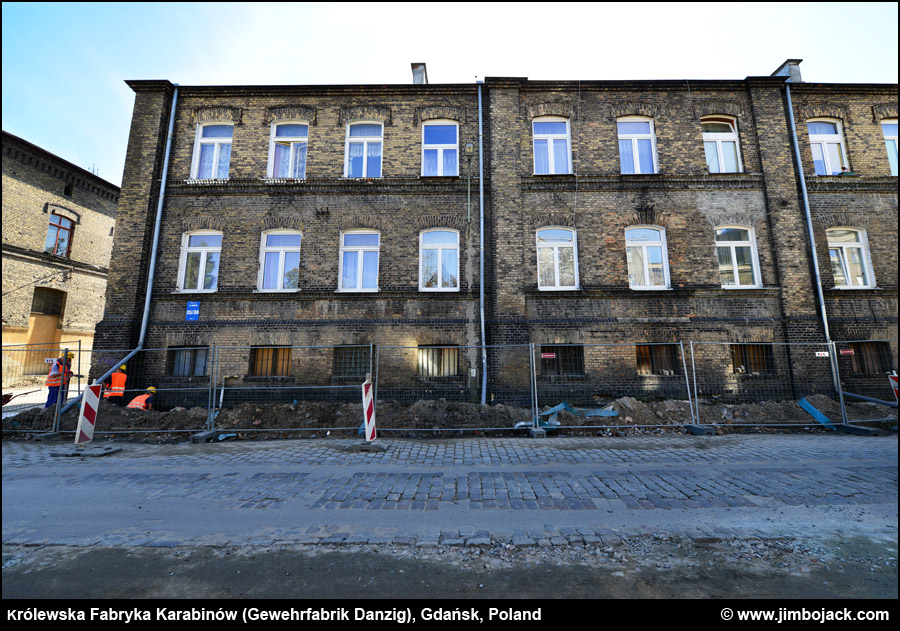
Factory grounds



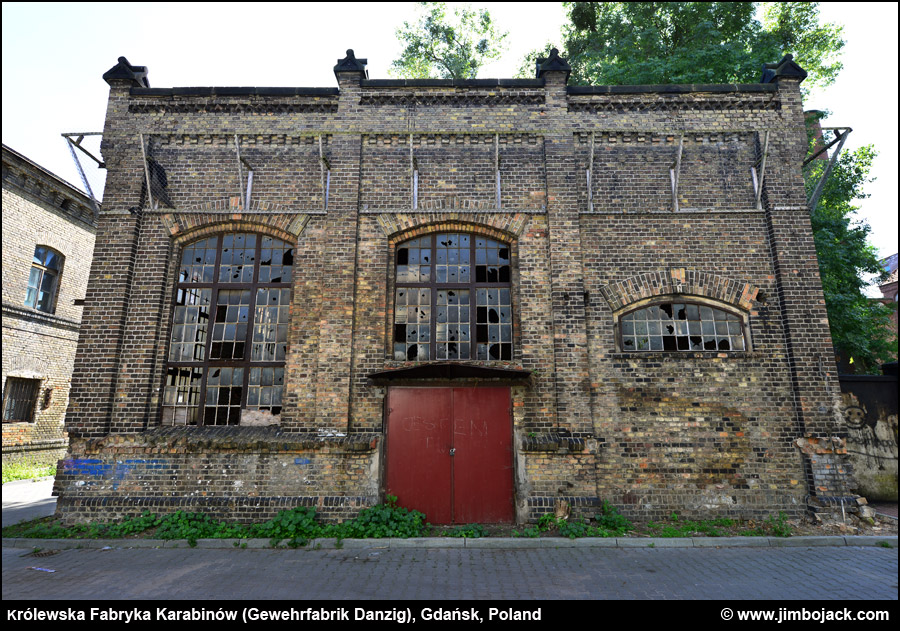
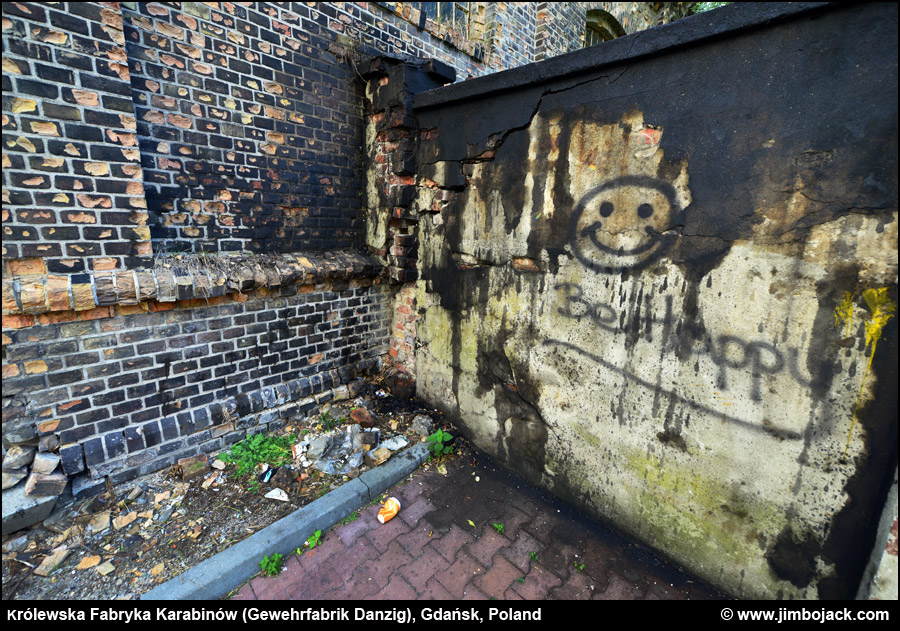
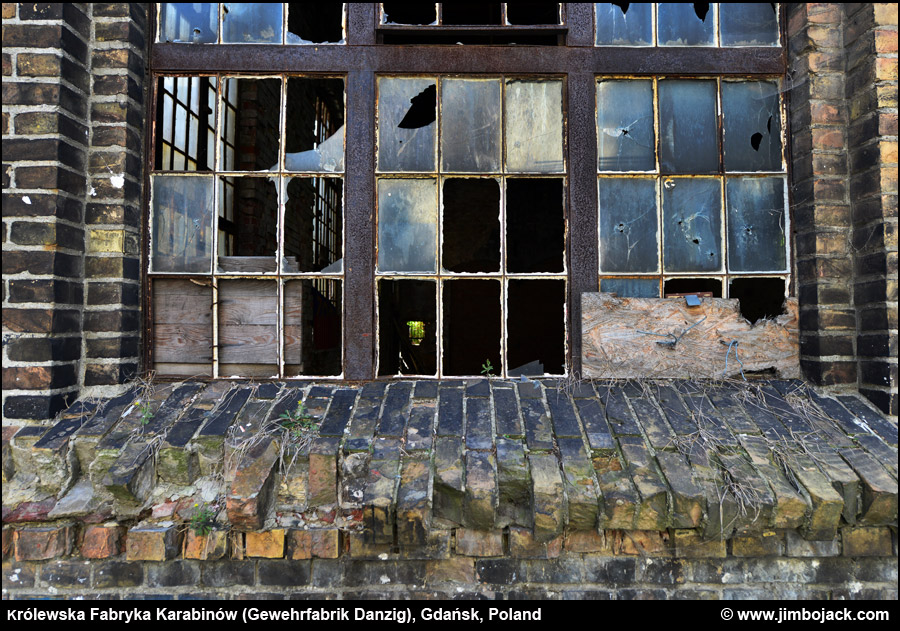
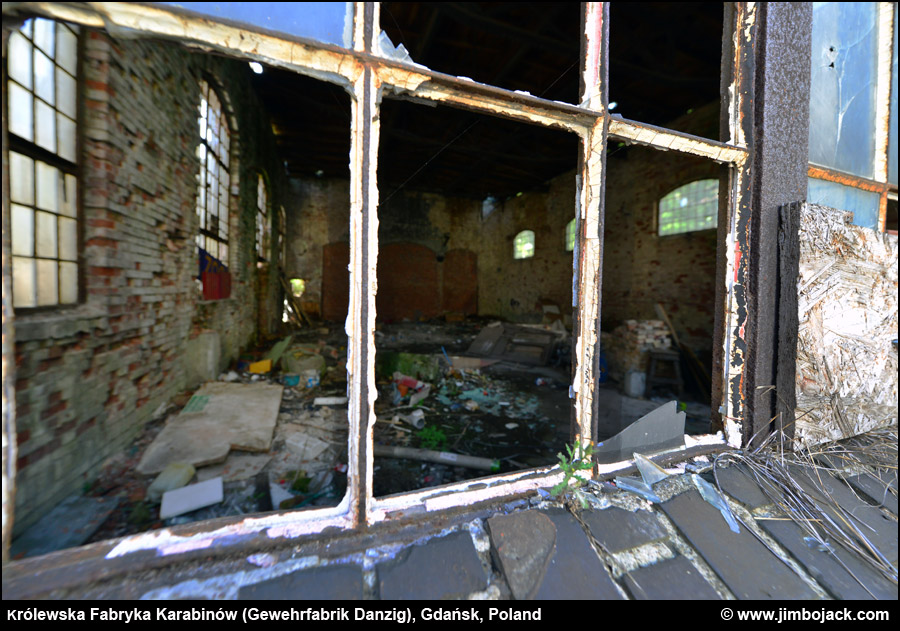

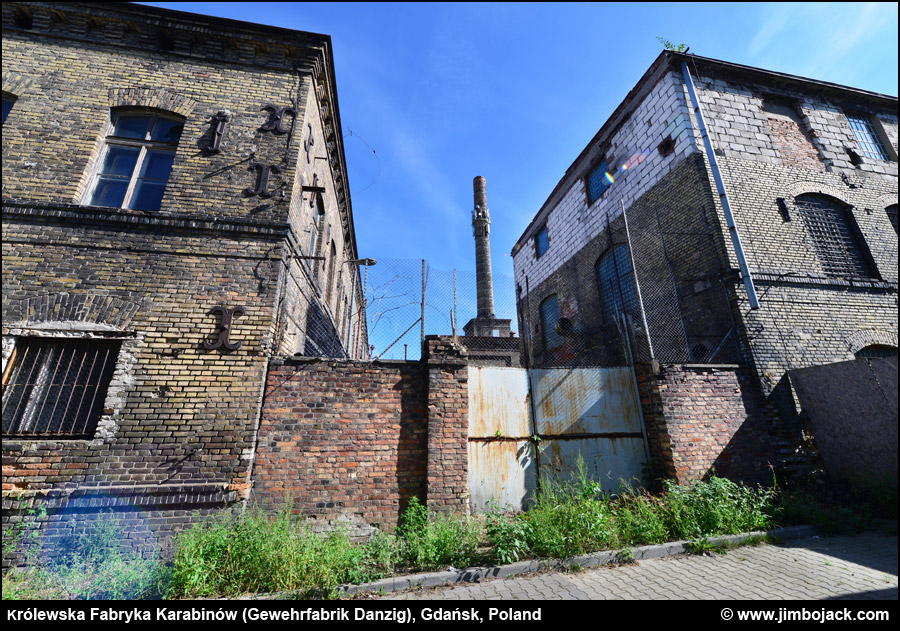
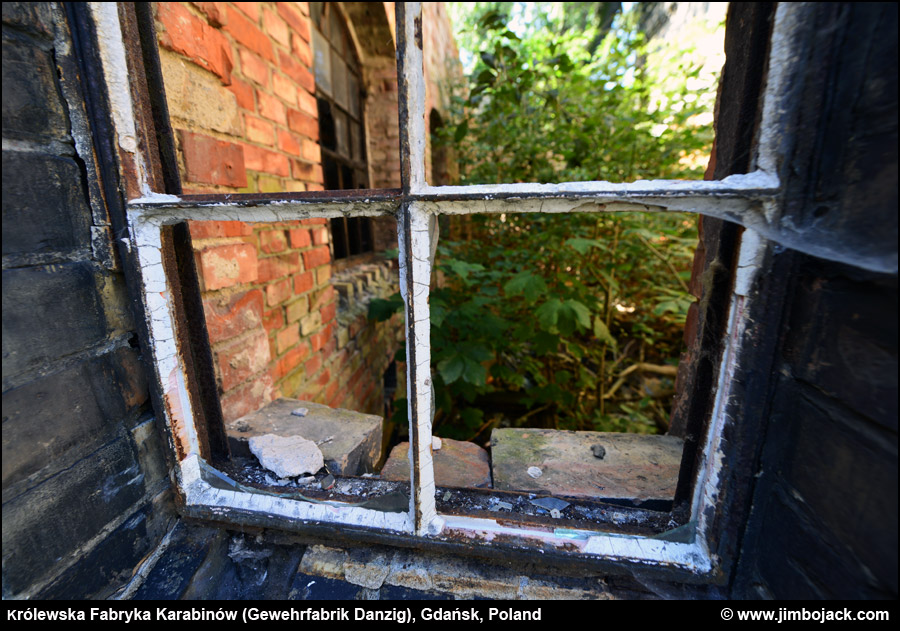
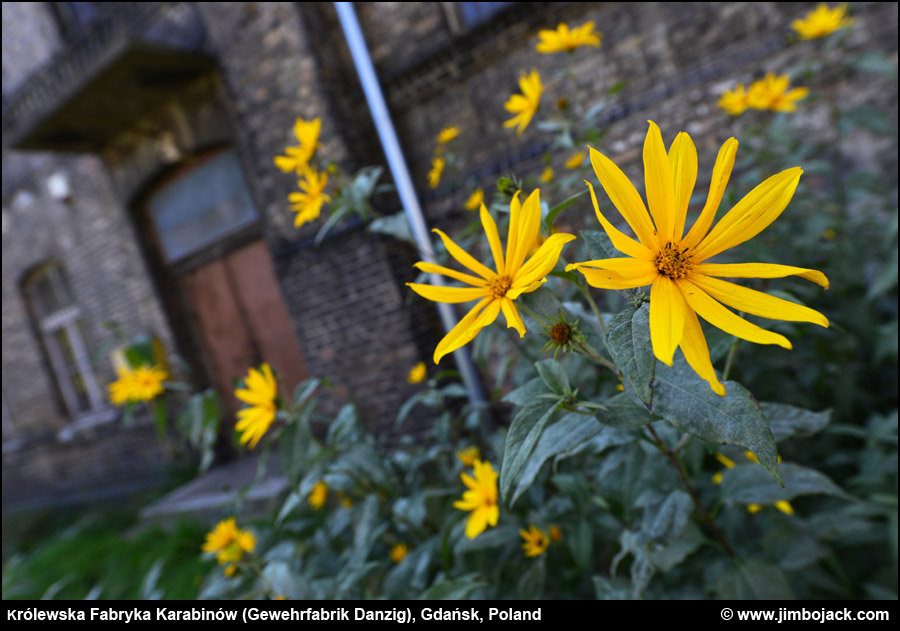
Building on the right is the former administrative office building, currently used as residential apartments The building on the left is partly occupied by a business.
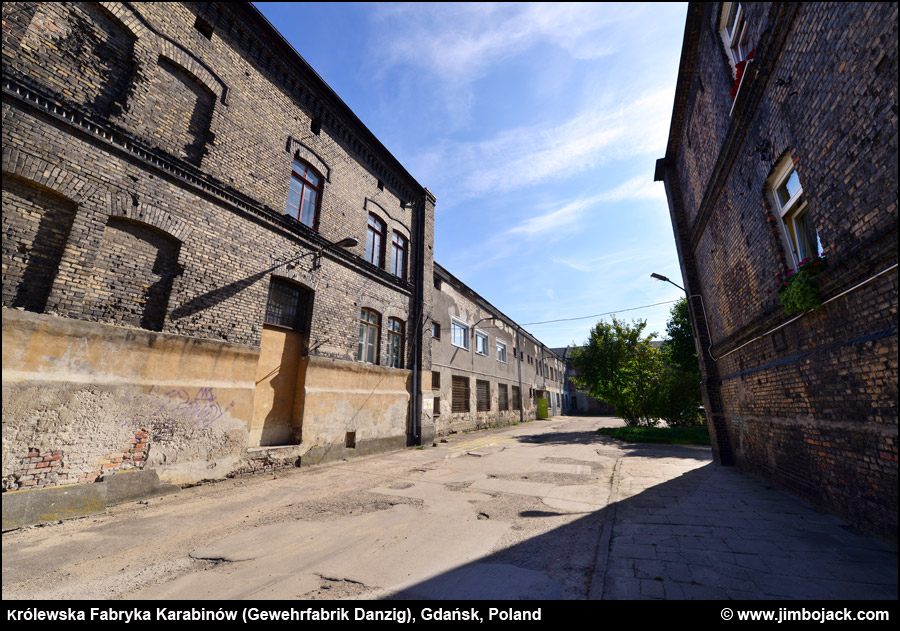
Here is a picture taken of the same area sometime during the 1930's from a little farther back (look at the two windows next to each other on the building to the left) showing the entrance to the factory grounds.
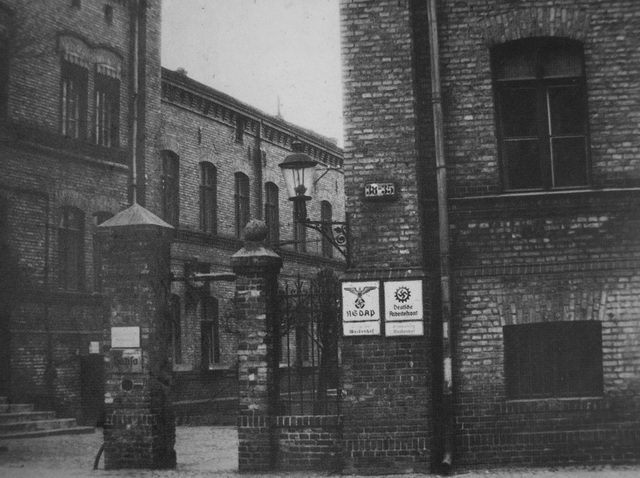
Old photo taken across the street (the administrative building is on the right)
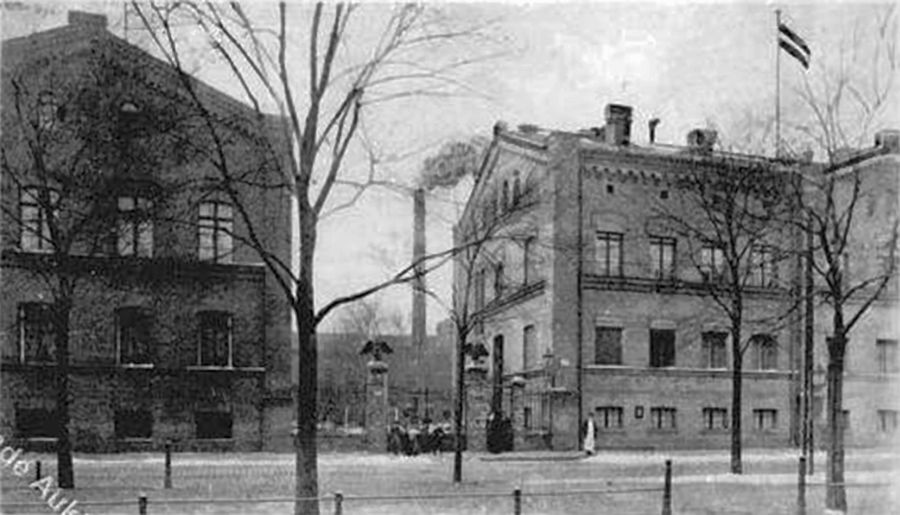
Factory grounds
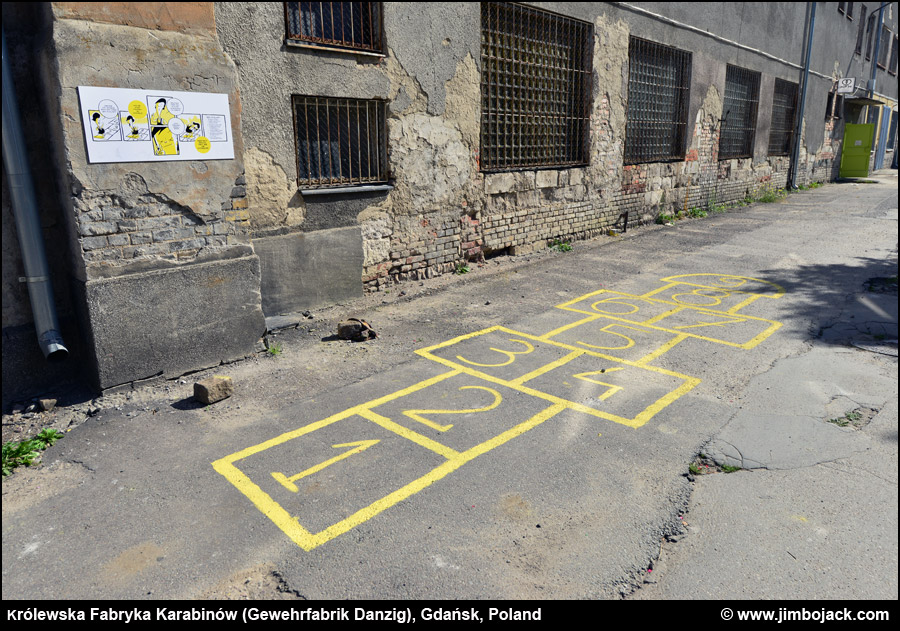
Front of the apartments, this is the square in the middle of the factory grounds.

Outside of the apartment (former factory administration) building
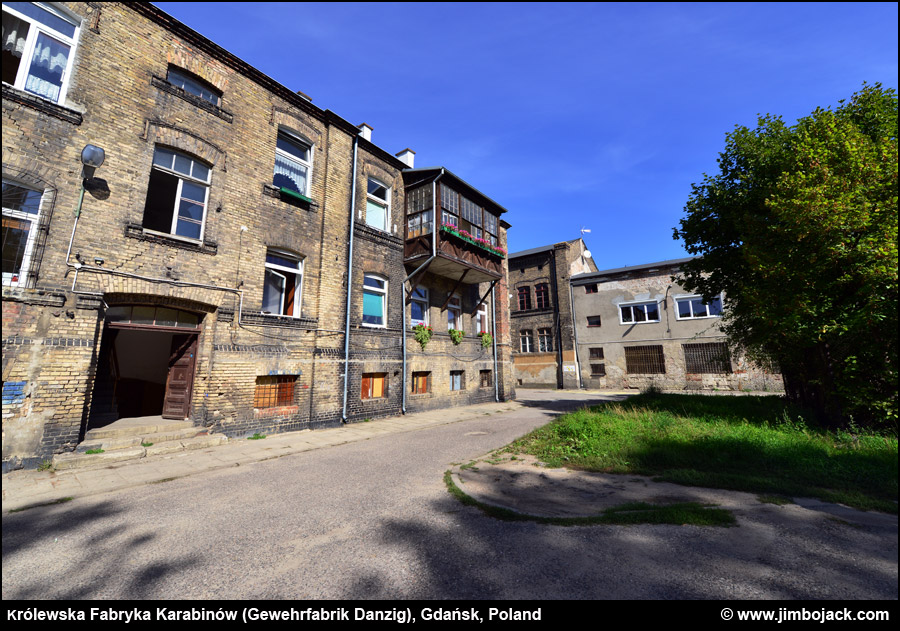
The dark bricks in these photos are original, the lighter colored ones are newer, used during the reconstruction of the building.
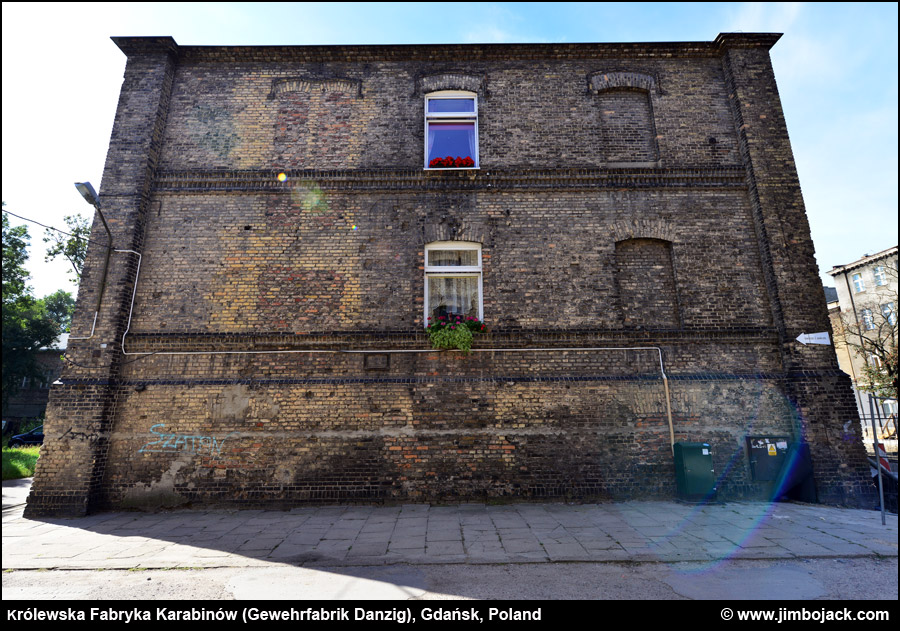
Visible shrapnel scars in the bricks
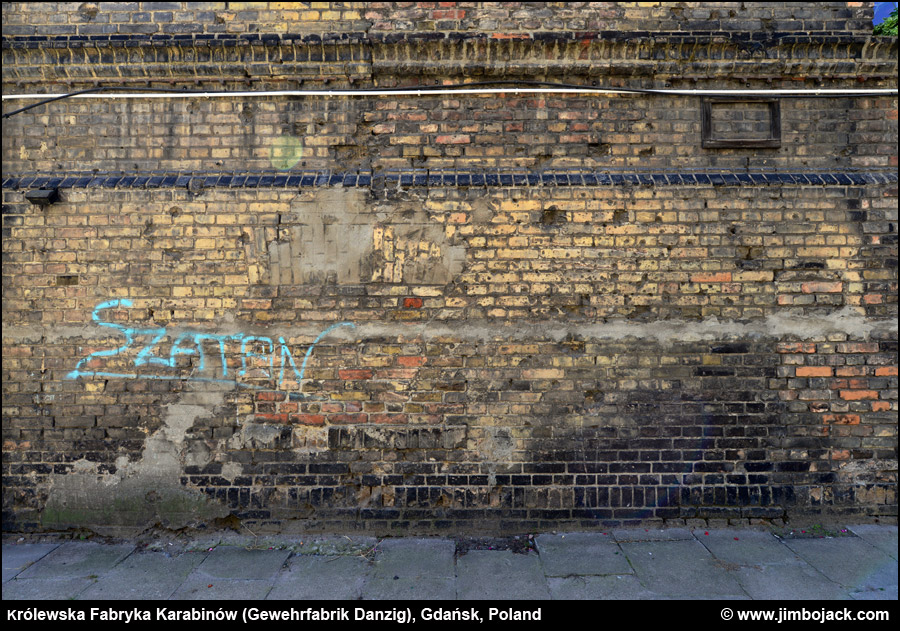

Inside of the apartment (former factory administration) building
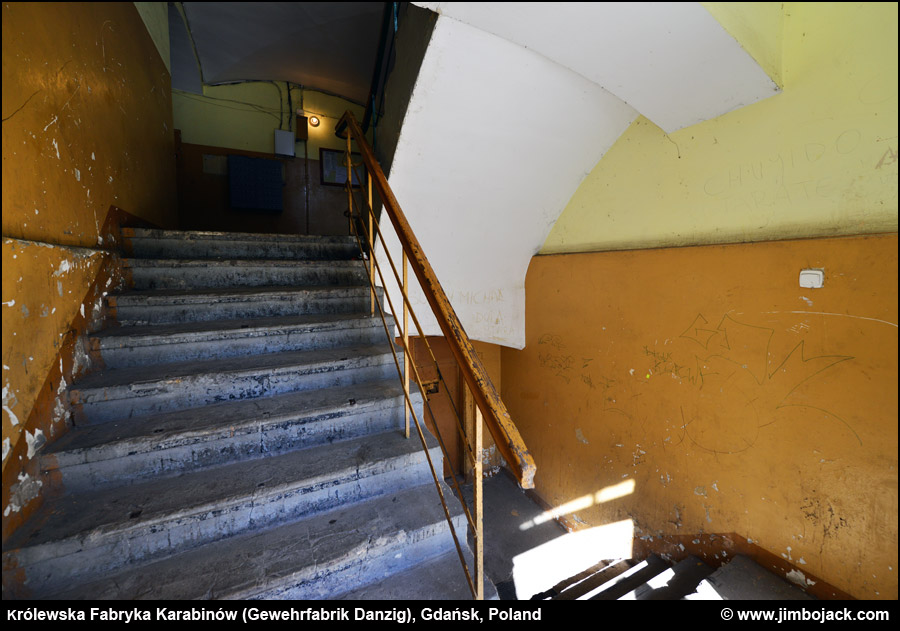
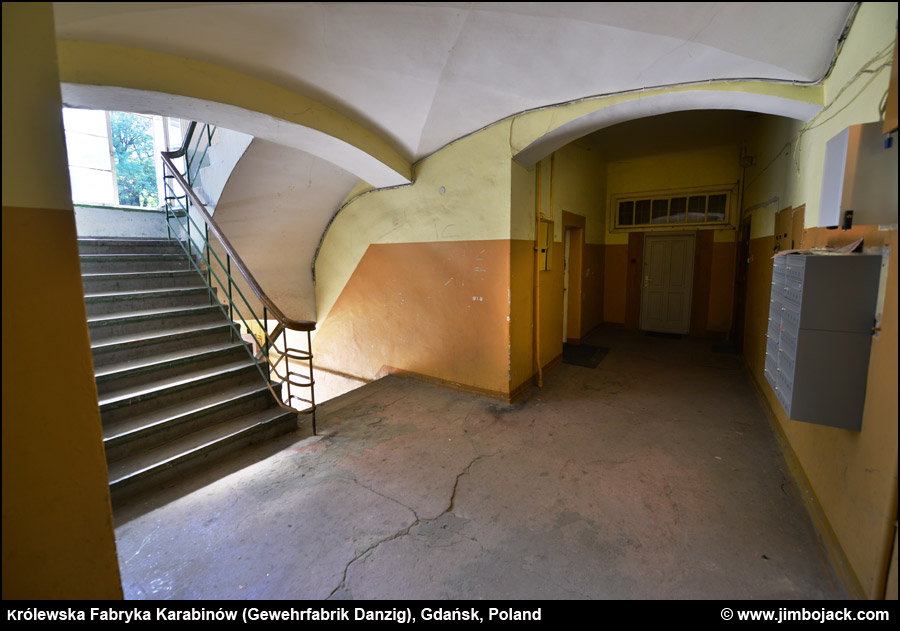

This is one of the main buildings of the factory, now housing a veterinary hospital.
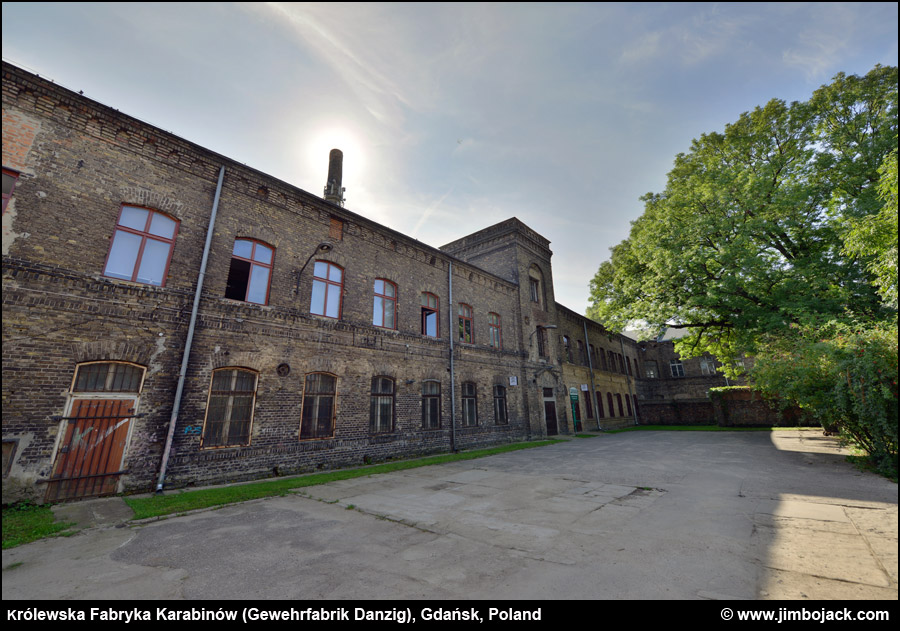
The light colored bricks were used to fix damage done to the building
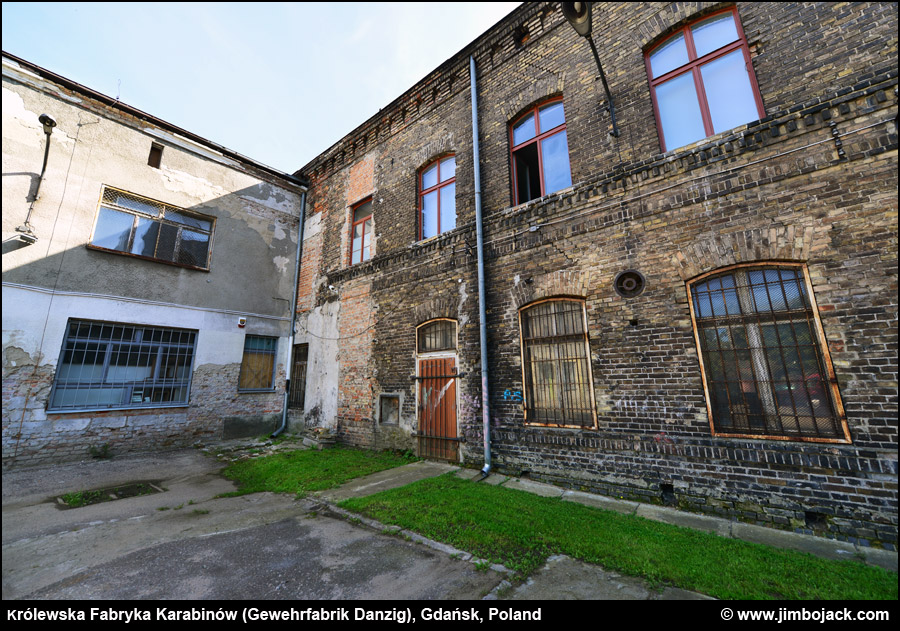

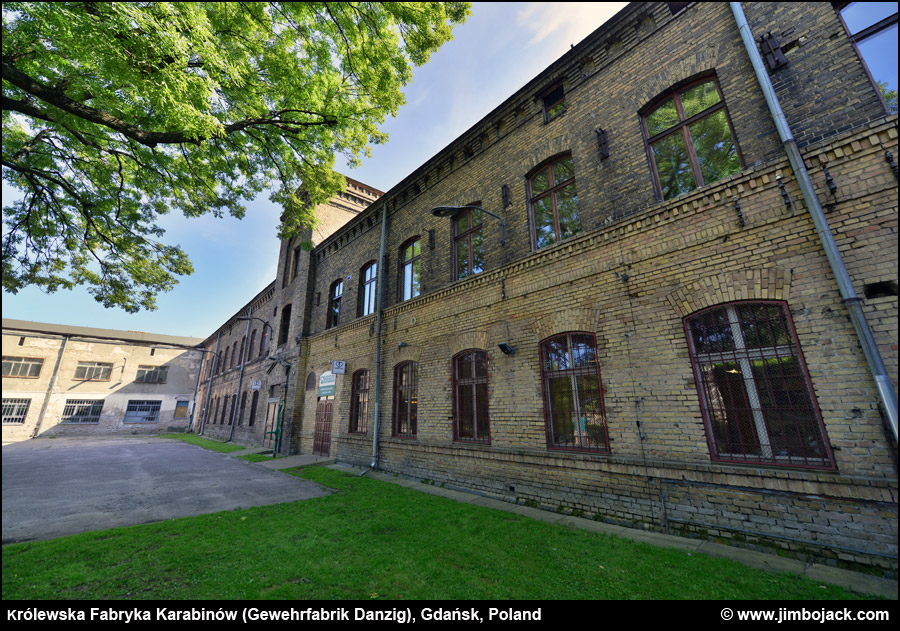
Various other factory buildings, these are now privately owned. Shortly after taking the next couple of pictures I was kicked out for trespassing and told I was not allowed to take pictures here.
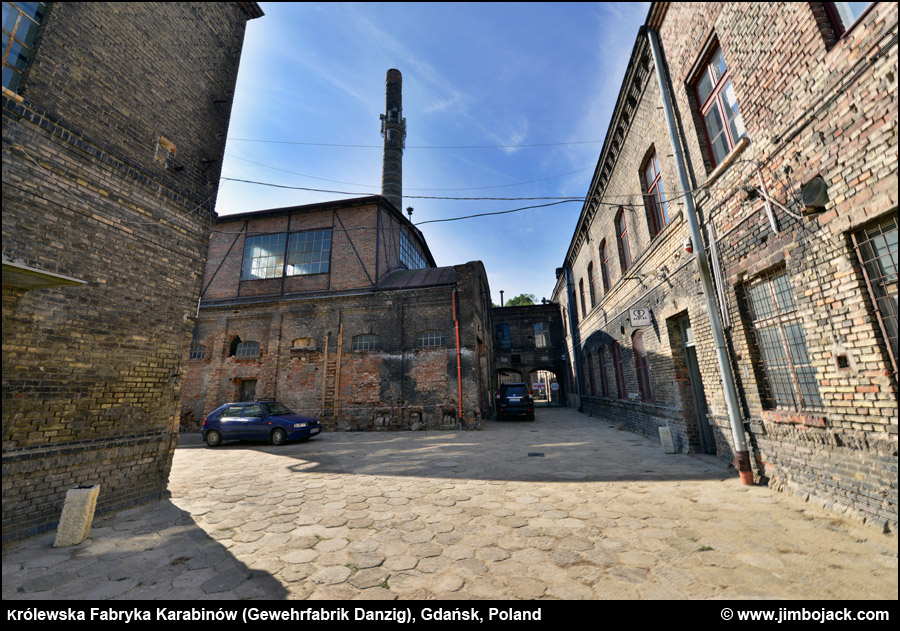
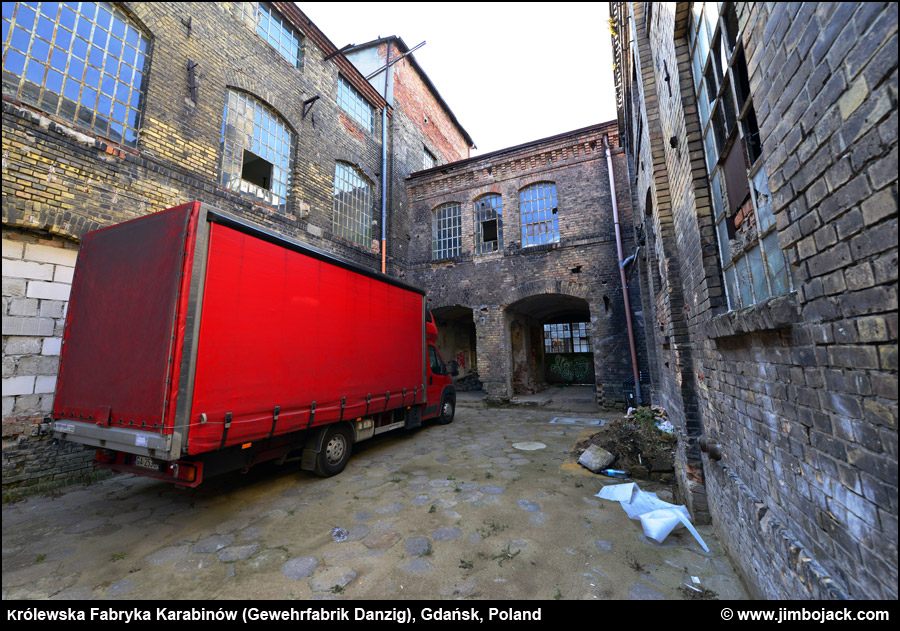
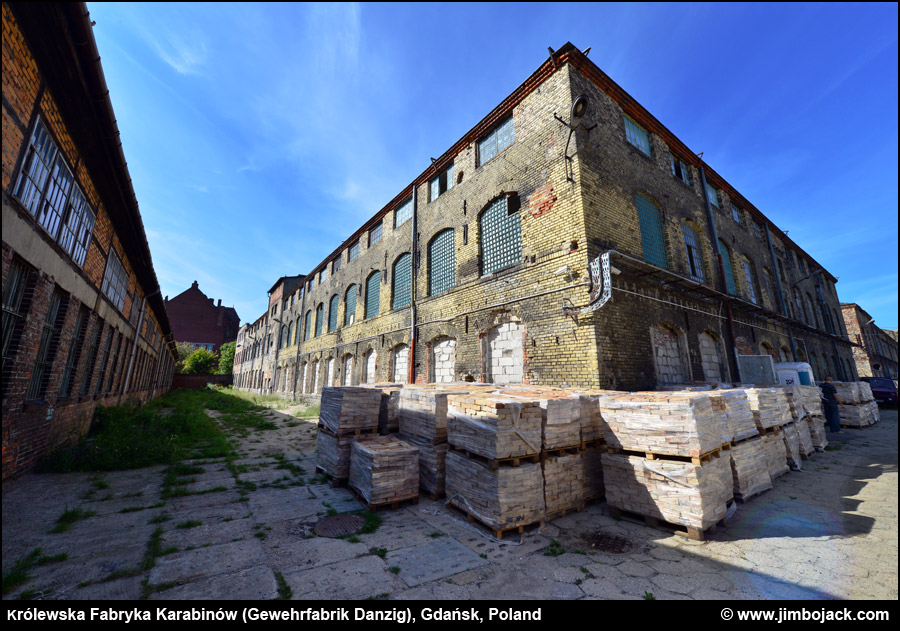
The next few photos show the area immediately next to the factory.
Built in 1800, the Uphagen's Manor House was given to the hospital next door in 1852 during the cholera epidemic that hit the city. The Uphagen family was a wealthy merchant family in Gdańsk, their main residence was the Uphagen's House (now a museum) in Gdańsk, more information here
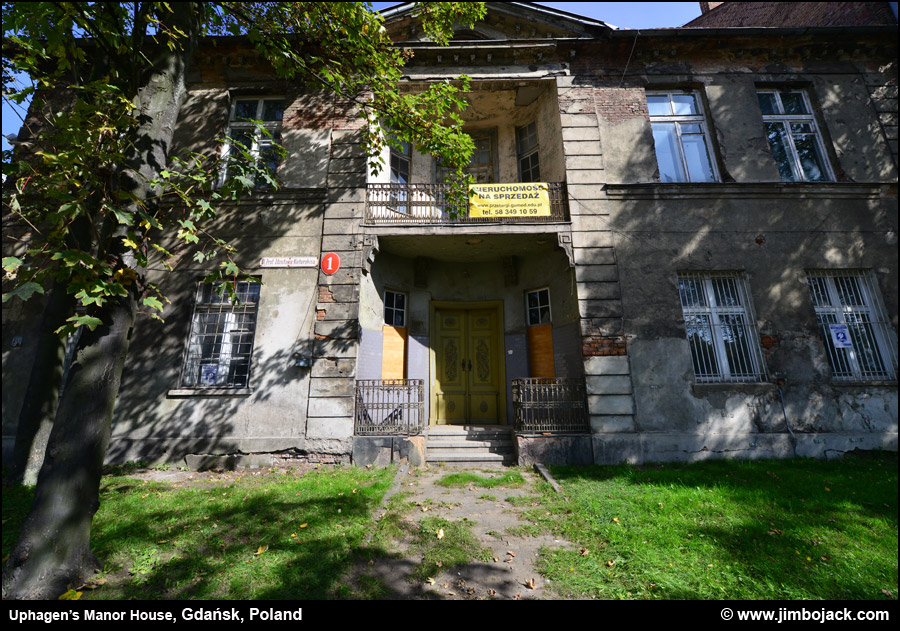
Uphagen's Manor House as it looked like in the 1920's (scan of an old postcard)
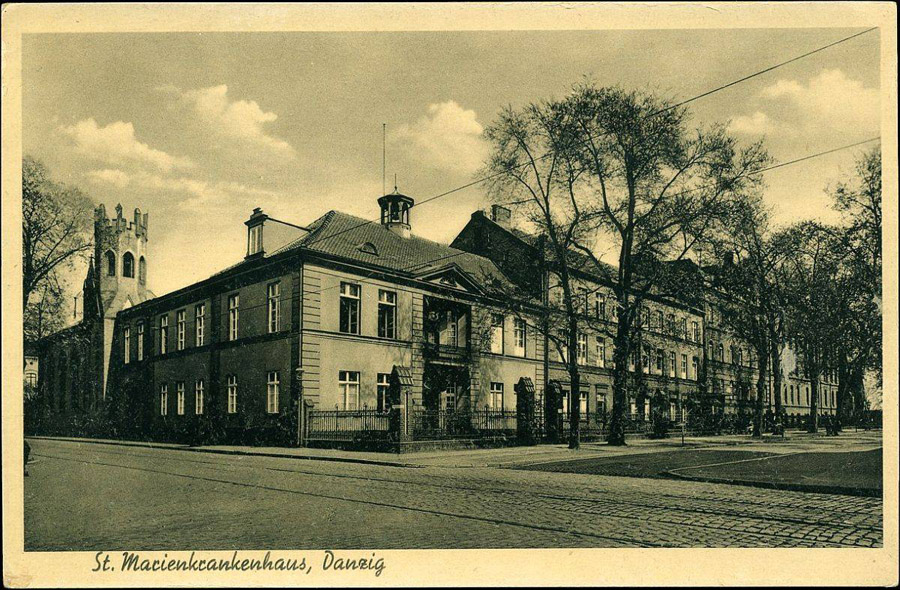
During the time of the Danzig Free State (Freie Stadt Danzig), there were four main hospitals. The oldest one was built in 1853, called the Marienkrankenhaus. During World War I, a wing of the hospital was used to treat injured soldiers. Between August 21st 1914 and December 31st 1919, 4,743 soldiers were treated at this hospital. It continued to operate throughout World War II and was finally abandoned in 2004. The hospital is located immediately to the right of the Uphagen's Manor House
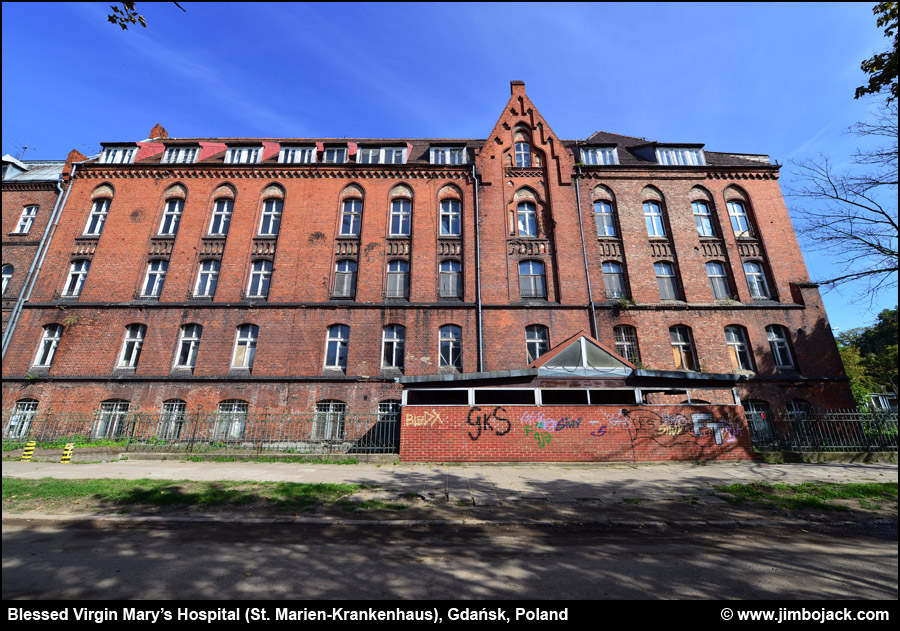
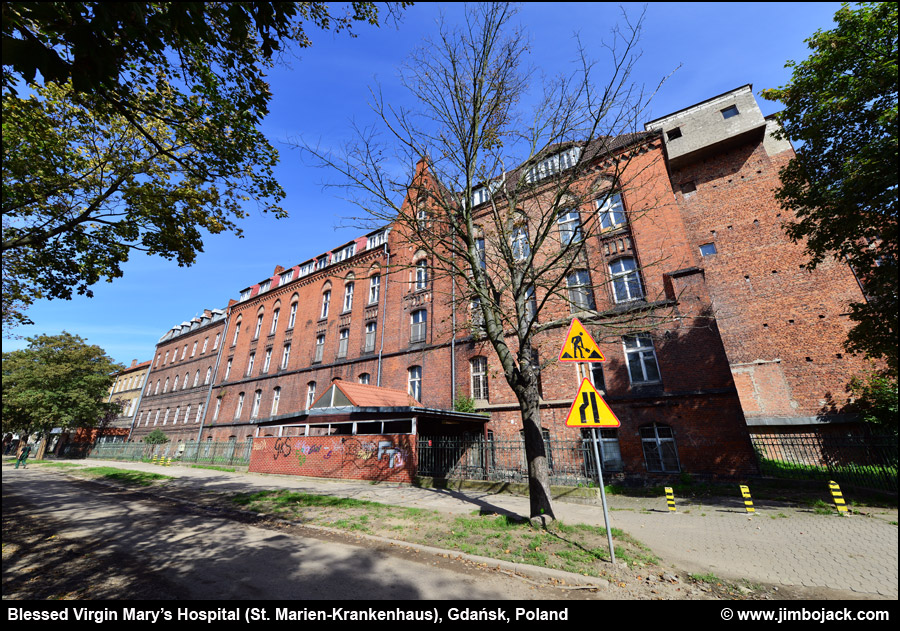
The Hospital as it looked liked in 1915 (scan of an old postcard)
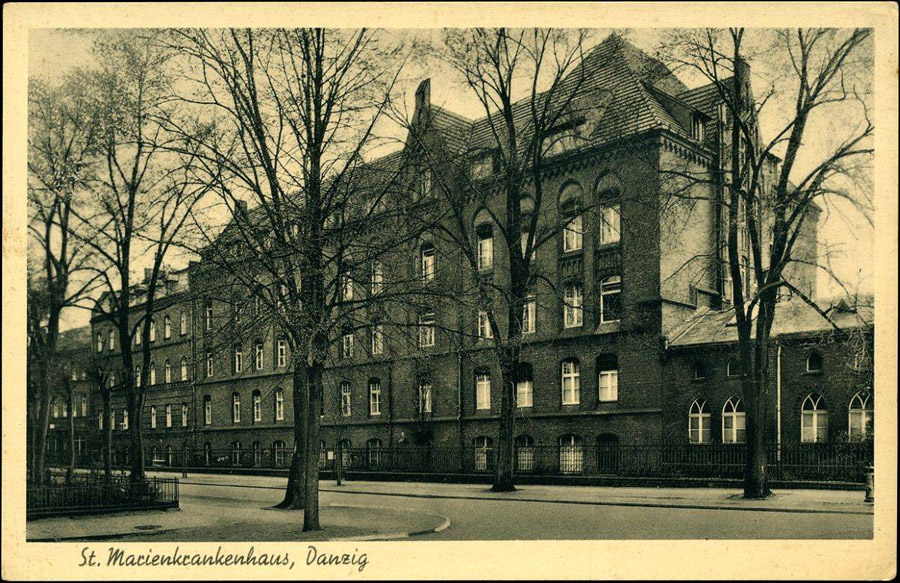
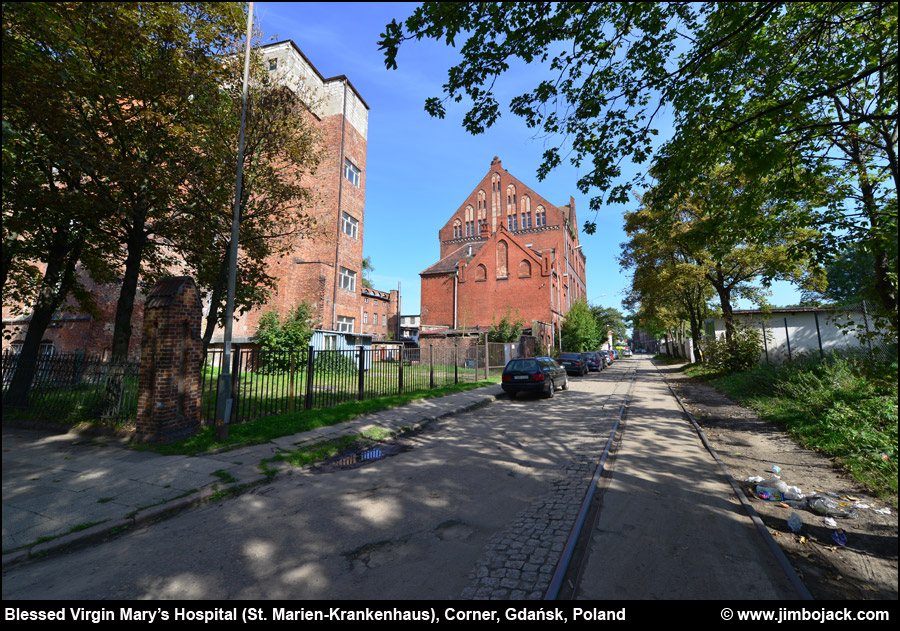
Same corner as it looked like in 1935 (scan of an old postcard)
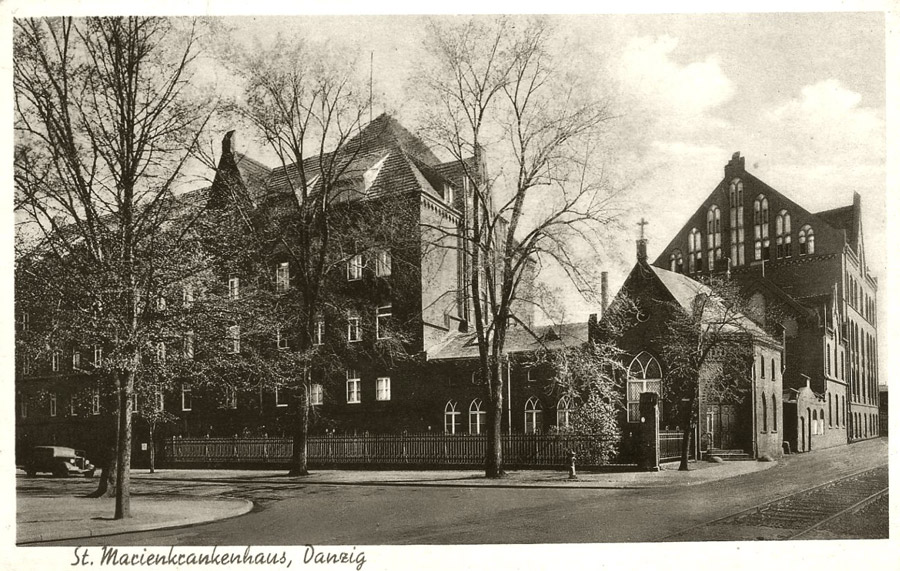
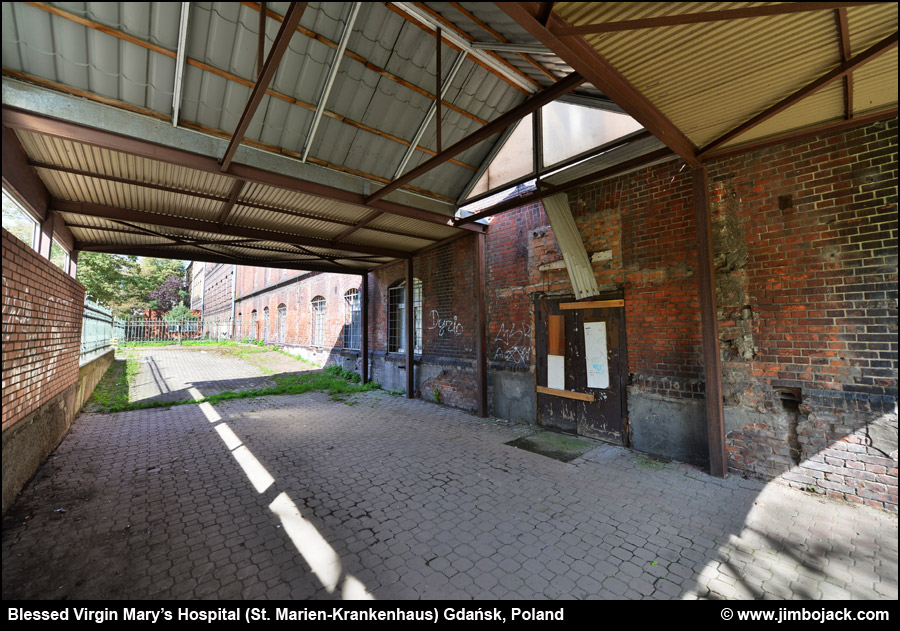
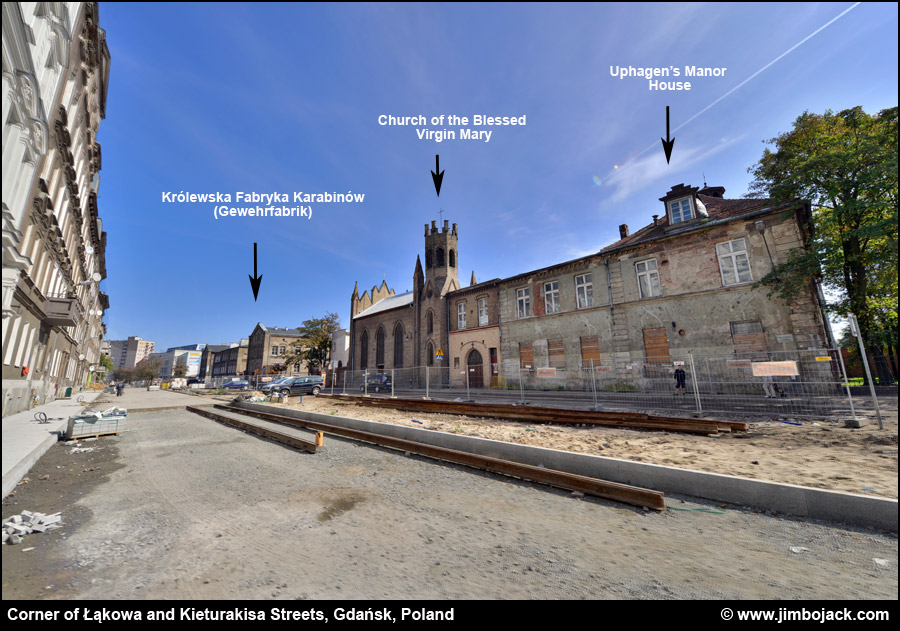
The Great Armory was constructed between 1601-1609 during the late Renaissance. Designed by Antoni van Opbergen, the architecture is a great example of Dutch Mannerism. Originally used to store armor, it served as a military depot until the end of WWI. In recent years it was used as a shopping center. The facade of the building is decorated by soldiers standing guard, the city's coat of arms are on top of the doorways. A small structure (not pictured) in the middle of the building was used to hoist ammunition and supplies from the basement to the upper levels. Currently the building is undergoing extensive renovations and is closed.
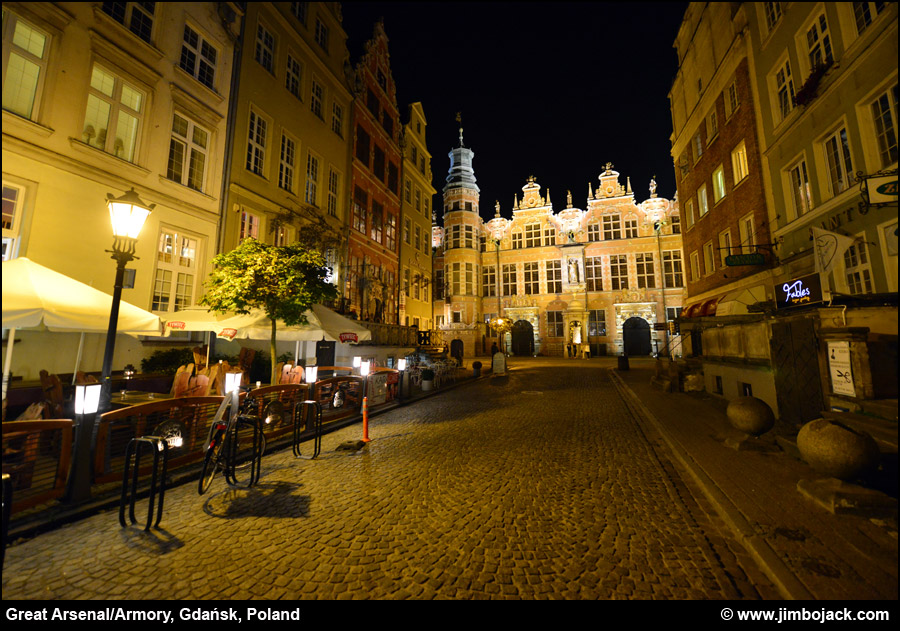
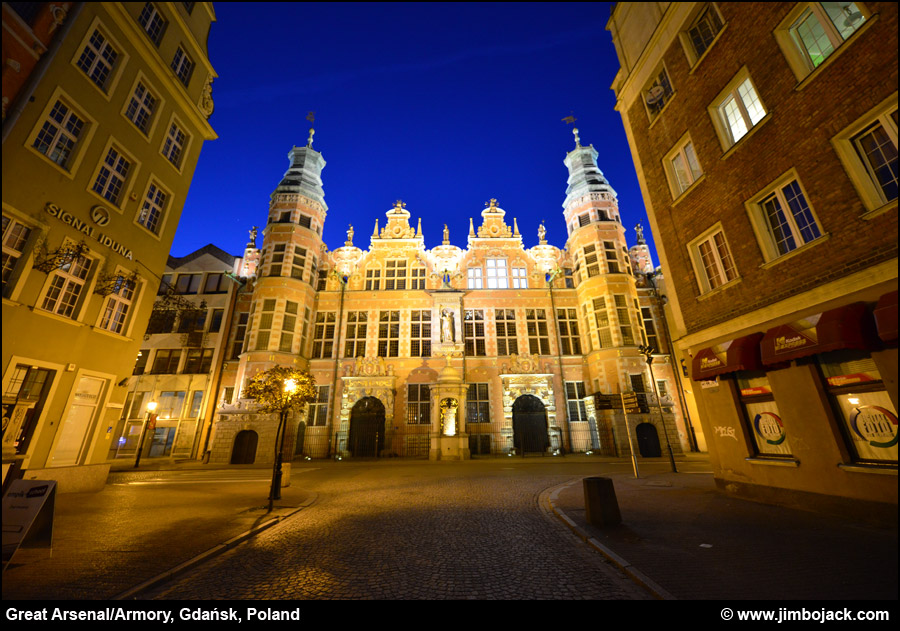
This is a Model 1888 Commission Rifle that's a part of my collection. It was made in Danzig, then supplied to Turkey sometime during WWI (as shown by the crescent mark above the crown on the receiver). Most of these rifles were subsequently refurbished by Turkey sometime during the 1930's. More information about these rifles here and here
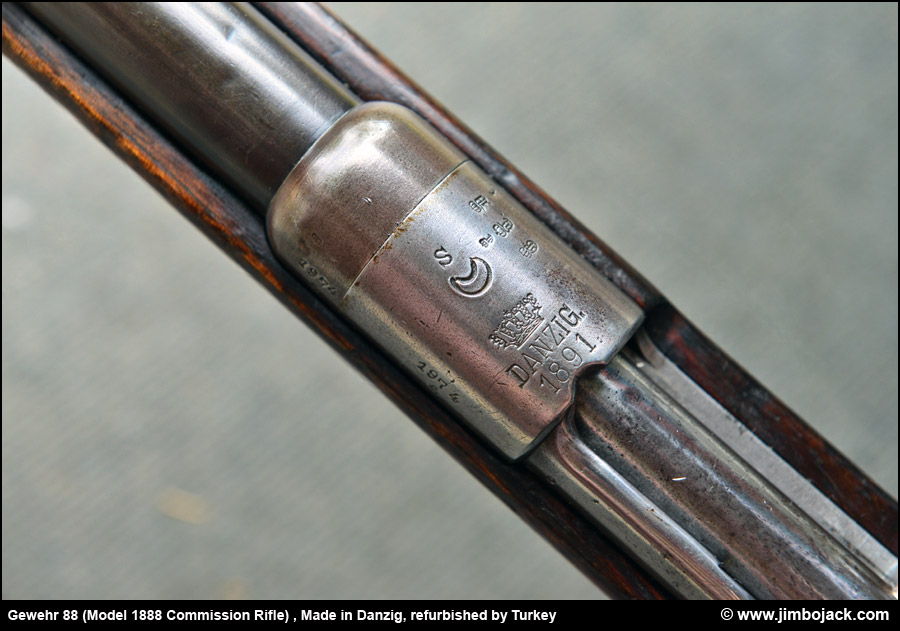
This is a very brief history of the factory, there is a lot more information that I did not have the time to include. Perhaps I will write about it at a later date.
I hope you found these photos and descriptions interesting, thanks for reading!
There is a great three part lecture on youtube about the factory. Unfortunately it is only available in Polish and there are no subtitles. Here are the three parts: (part one, two, three)